
Many passionate gardeners are turning to companion planting to reduce pesticide use. Planting different species together can provide benefits. However, some species are allelopathic plants, which means they can seriously harm other plants.
Plants use allelopathy to protect themselves and rise above the competition. Allelopathic plants release phytochemicals from their roots or leaves that disrupt or stunt the growth of other plants.
Where Allelopathic Plants Get Confusing
Not all allelopathic plants are harmful to all plants. They may produce chemicals that affect only specific plant families.
For example, Black Walnut trees are infamous for their negative effects on nightshade plants. (They made Cheryl’s list of plants that don’t play well with tomatoes.) However, beans, corn and onions don’t have any problems thriving when planted nearby.
There are a few good reasons to plant allelopathic species. For example, you can use allelopathic plants for natural weed control. Some farmers grow them as cover crops to ensure a weed-free harvest with their next one.
Check This List Before Planning
Before planning your garden beds and investing in plants and seeds, make sure you’re not accidentally causing yourself extra anxiety.
Trees
1. American Elderberry (Sambucus canadensis)
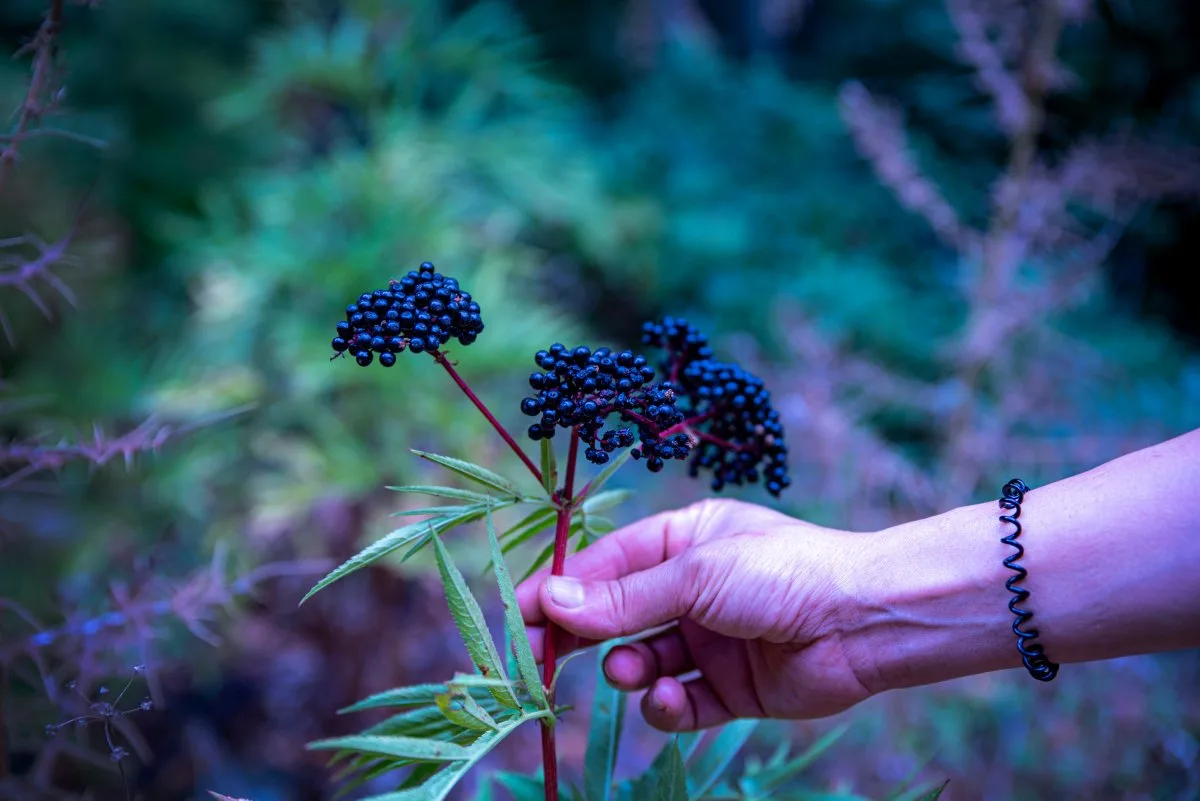
Many homesteaders grow elderberry for jams or jellies, medicinal use, and poultry food. However, note that all of the Sambucus species have allelopathic effects to some degree.
2. Black Locust (Robinia pseudoacacia)
While appreciated for its timber, Black Locust has a limiting effect on other plants, particularly when densely planted.
3. Black Plum (Syzygium cumini)
Debris from this tree can delay seed germination in desired plants.
4. Black Walnut (Juglans nigra)
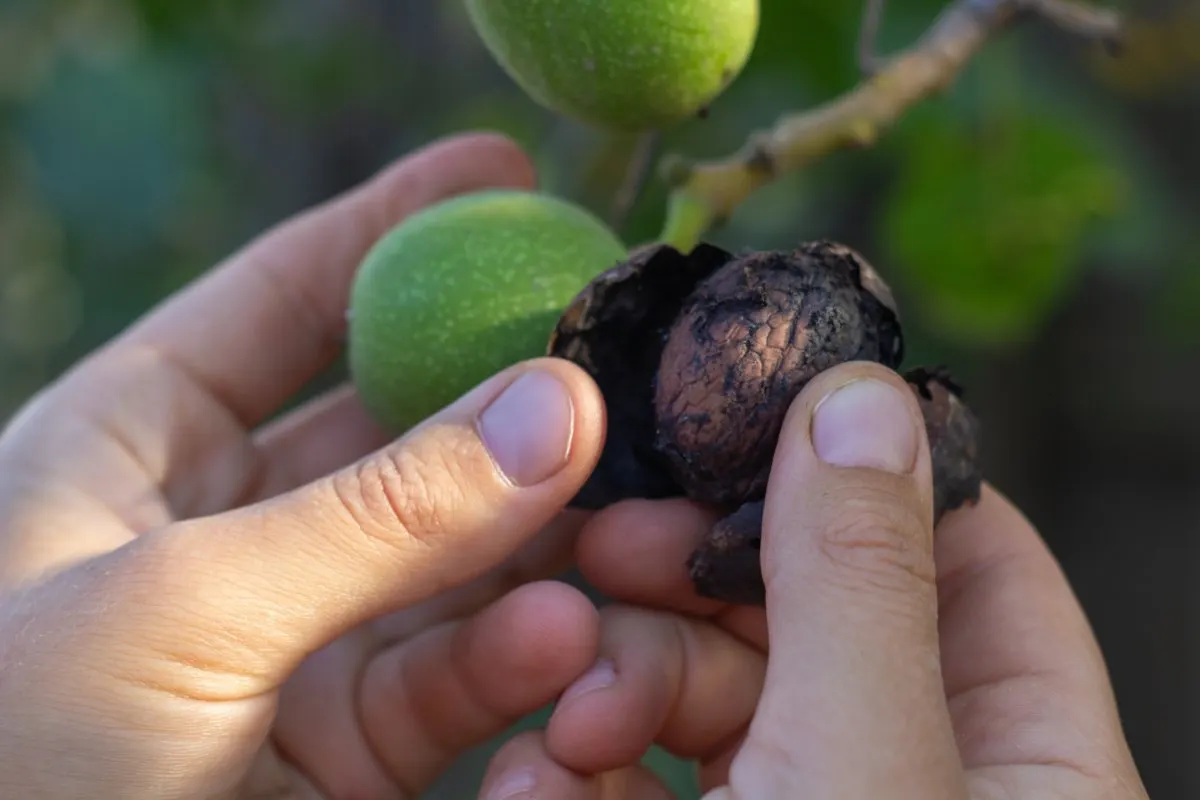
Toxicity from juglone contained in the roots and nuts of this species causes yellowing, stunted growth and death in sensitive plants. These include tomatoes, eggplants, grapes, blueberries, blackberries and azaleas.
5. Chinaberry Tree (Melia azedarach)
This ornamental hails from Southeast Asia, and the alkalinity of its leaf litter makes it very difficult for other plants to thrive nearby.
6. Eastern Red Cedar (Juniperus virginiana)
This otherwise useful shade tree is allelopathic to grasses, both native and ornamental.
7. Eucalyptus (Eucalyptus)
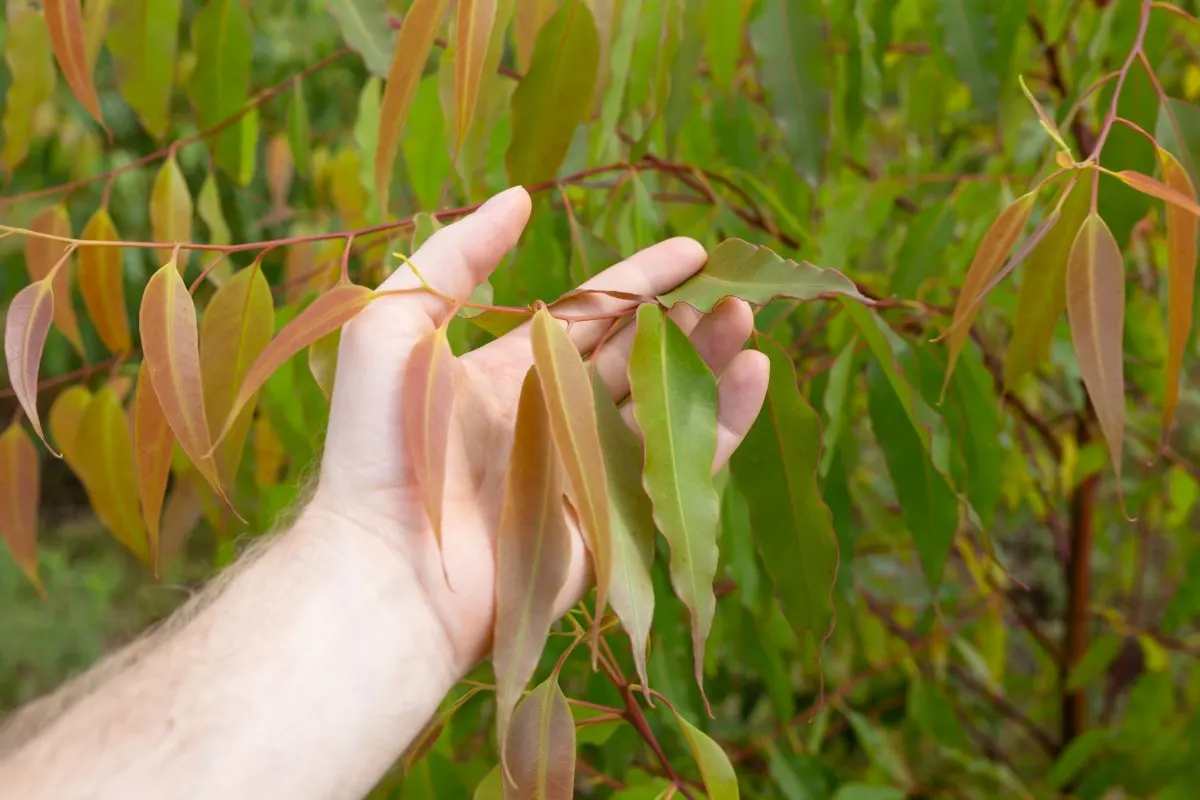
Gardeners in subtropical climates can grow Eucalyptus for its beauty and medicinal benefits. However, note that leaf litter from this tree stunts the root growth of other tree species.
8. Hackberry trees (Celtis occidentalis)
This native American shade tree is an important support tree for the Hackberry Emperor and Question Mark butterflies. The leachate from fallen Hackberry leaves, however, can seriously inhibit the growth of other plants.
9. Mango (Mangifera indica)
This fruit tree is a prolific grower in Zones 9 to 11. As well as producing delicious fruits, its leaves are used medicinally. However, its leaf litter can be allelopathic, damaging surrounding plants.
10. Pines (Pinus)
These low-maintenance trees look great year-round. However, they release volatile organic compounds (VOCs) from their roots and needles. This sesquiterpene β‐caryophyllene seems to be the source of these allelopathic effects, but researchers think there may be others.
11. Southern Magnolia (Magnolia grandiflora)
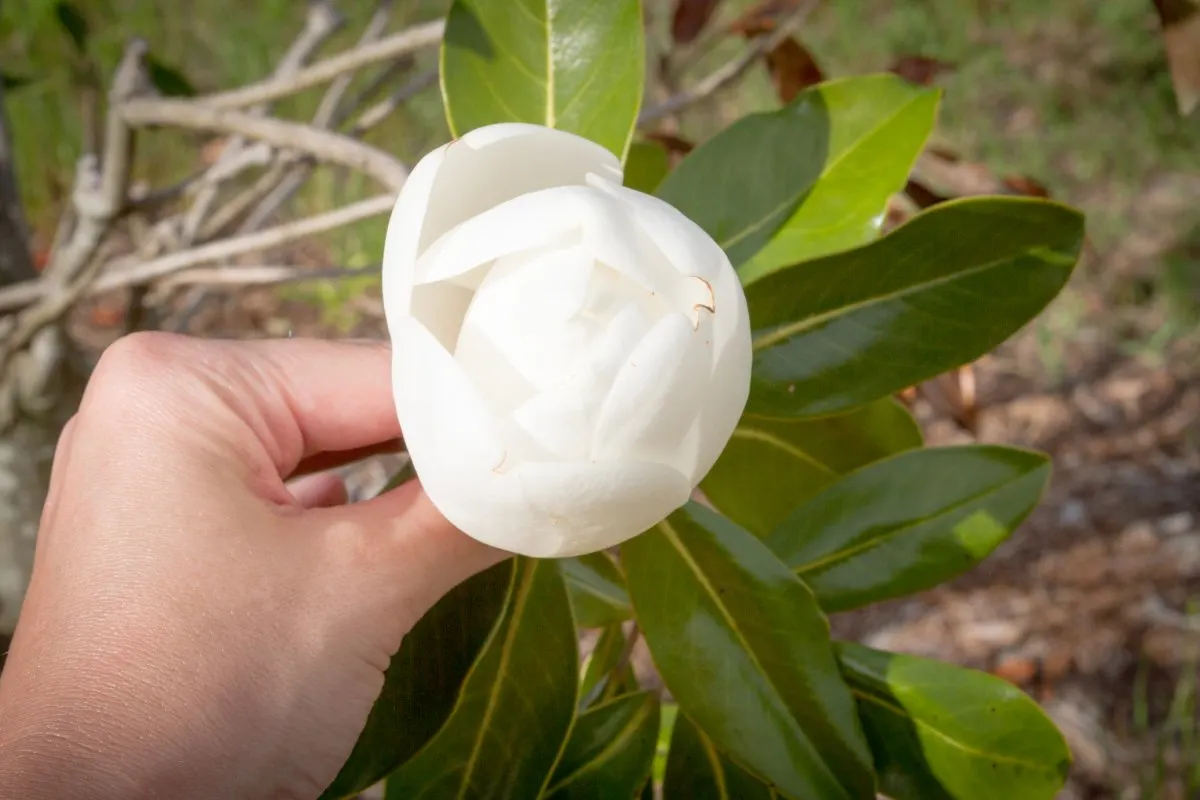
These unique flowering trees are a real conversation starter in the garden. Unfortunately, the sesquiterpene lactones they produce can cause nearby plants to suffer.
Shrubs
12. Bearberry (Arctostaphylos uva-ursi)
This low-growing evergreen shrub requires little maintenance, making an excellent ground cover. However, it is also an allelopathic plant.
13. Forsythia (Forsythia)
This pretty flowering bush is a popular ornamental but extracts from its leaves revealed two allelopathic chemicals.
14. Rhododendron (Rhododendron)
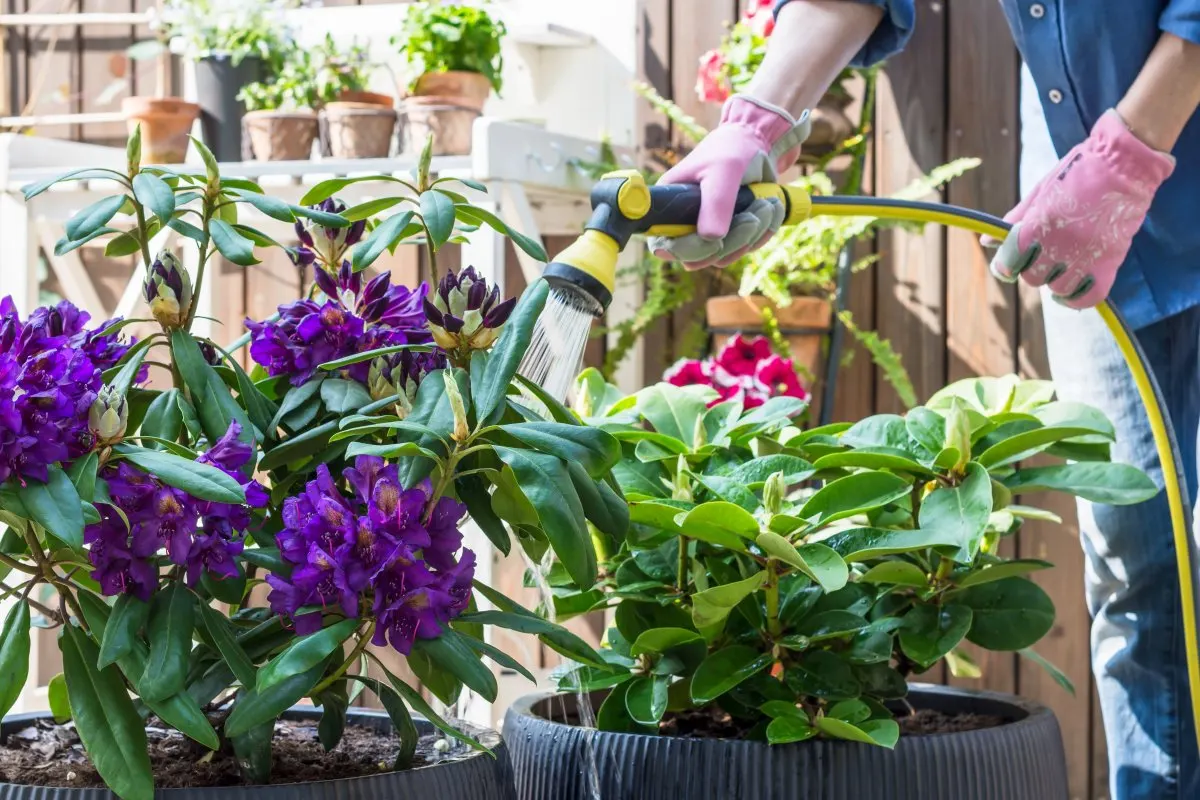
These ornamental flowering evergreens make a big statement in the garden. They take up a lot of space, and to make that space, they produce up to 26 different allelochemicals
Flowering Plants
15. Asters
Plants in the Asteraceae family have been shown to affect other species and can inhibit germination in seeds.
16. Goldenrod (Solidago virgaurea)
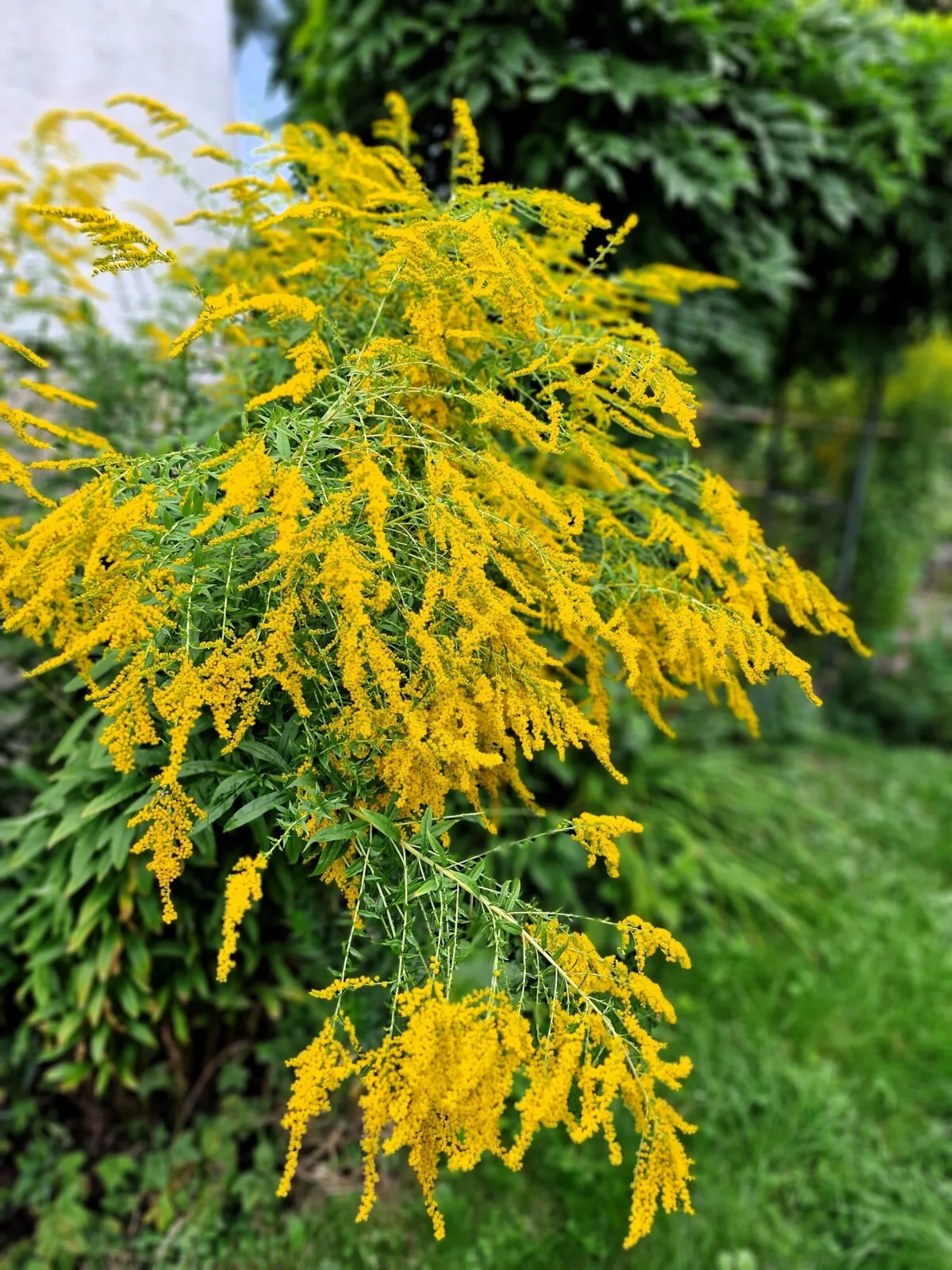
You may grow goldenrod for medicine or bee forage. However, studies in the lab and in the field show it affects other plants. When studied, it reduced the germination rates of lettuce and radish and inhibited growth in maple trees and red clover.
17. Himalayan Balsam (Impatiens glandulifera)
This pretty but highly competitive flowering plant can bully native species when grown in the garden. It produces naphthoquinones, allelochemicals that inhibit seed germination and the development of mycorrhizal fungi.
18. Sunflowers (Helianthus annuus)
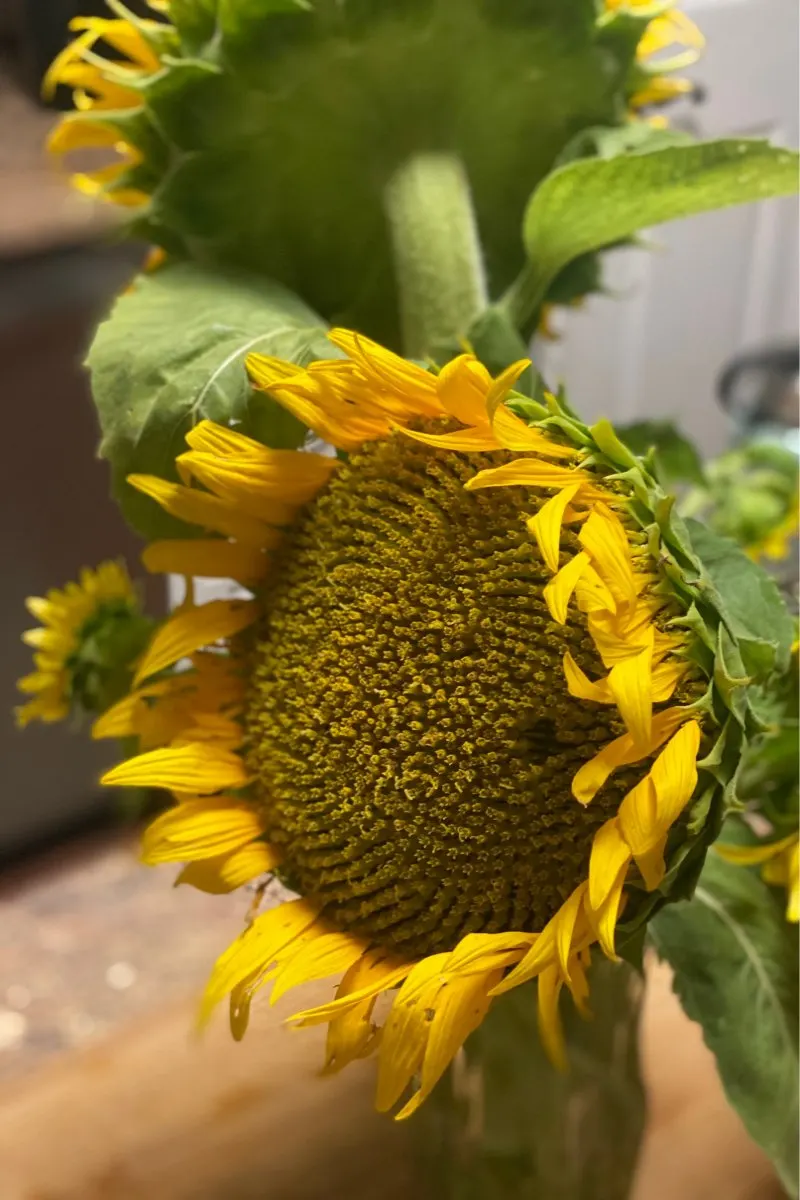
These cheerful-looking flowers have a sinister side. While supporting pollinators and providing seeds for wild birds, they’re not very friendly to other plant species. They’ve shown they will inhibit the germination and initial growth of lettuce and wheat.
19. Touch-Me-Not (Mimosa pudica)
Sometimes called “Sensitive Plant,” this fascinating tropical plant has become a favorite garden ornamental in warm climates. It gets its name from the way it folds up when touched. A 2016 study showed it emits inorganic sulfur compounds and other corrosive substances when disturbed.
Vegetables and Herbs
20. Brassicas
You’ll find a wide variety of brassicas for your vegetable garden, from mustard greens to kale to cabbage. Leftover debris from many brassica plants can inhibit the growth of future crops. Some are more detrimental than others, with turnips affecting seed germination more than garden radish, as one example.
21. Corn (Zea mays)
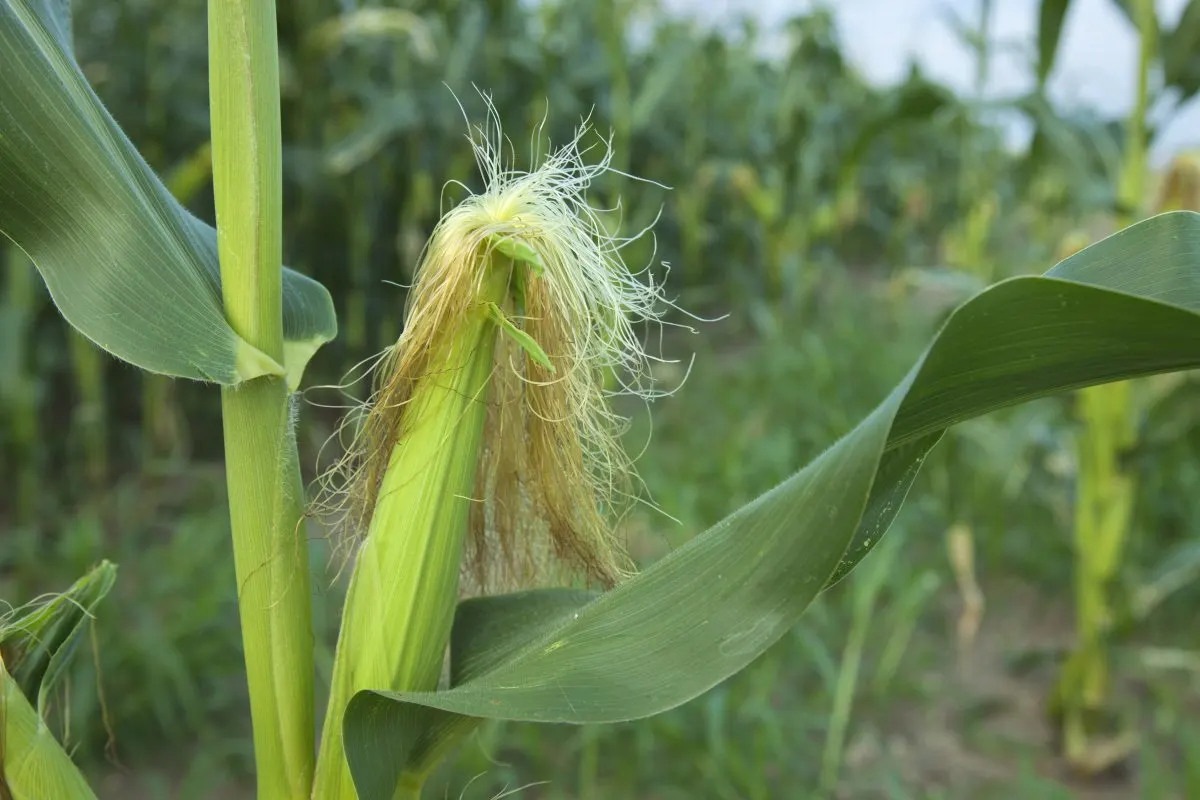
While corn plants are not allelopathic, corn pollen has negative effects on several plants, including wildflowers, ornamental trees, and melons.
22. Cucumber (Cucumis sativus)
Researchers discovered the allelopathic properties of cucumbers back in 1974. A more recent study identified the two chemicals exuded from cucumber roots that make it unwise to plant it near lettuce.
23. Fennel (Foeniculum vulgare)
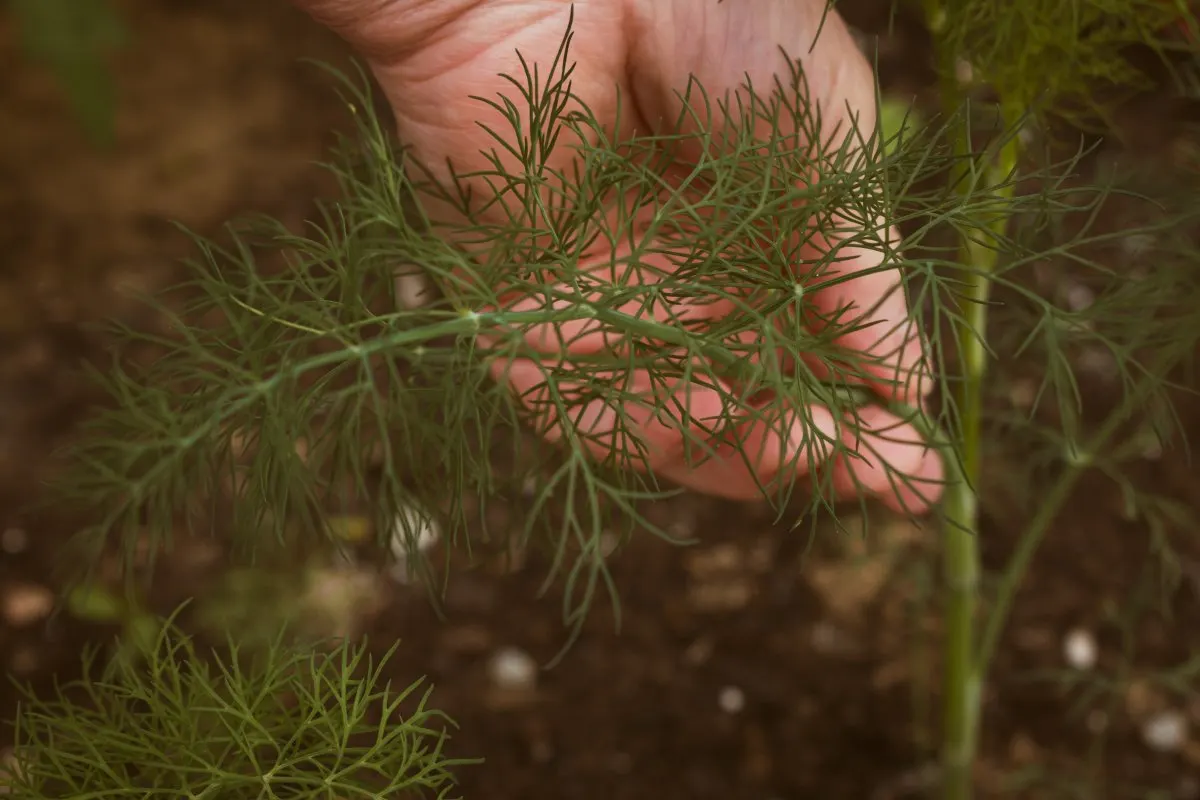
Fennel is simply not friendly with other plants. It can reduce root mass in many nearby species. Tracey has written more on its effects and how to grow fennel so it doesn’t affect the rest of your garden.
24. Oregano (Origanum vulgare)
Thanks to its intense volatile compounds, this culinary herb adds a unique flavor to foods and offers anti-septic qualities. These same volatiles make the roots, and to a lesser degree, the stems and leaves, an inhibitor to the growth of other plants nearby.
25. Rosemary (Salvia rosmarinus)
This pungent herb contains carnosic acid, which can negatively impact the growth of nearby plants. The effect seems to intensify when conditions are dry.
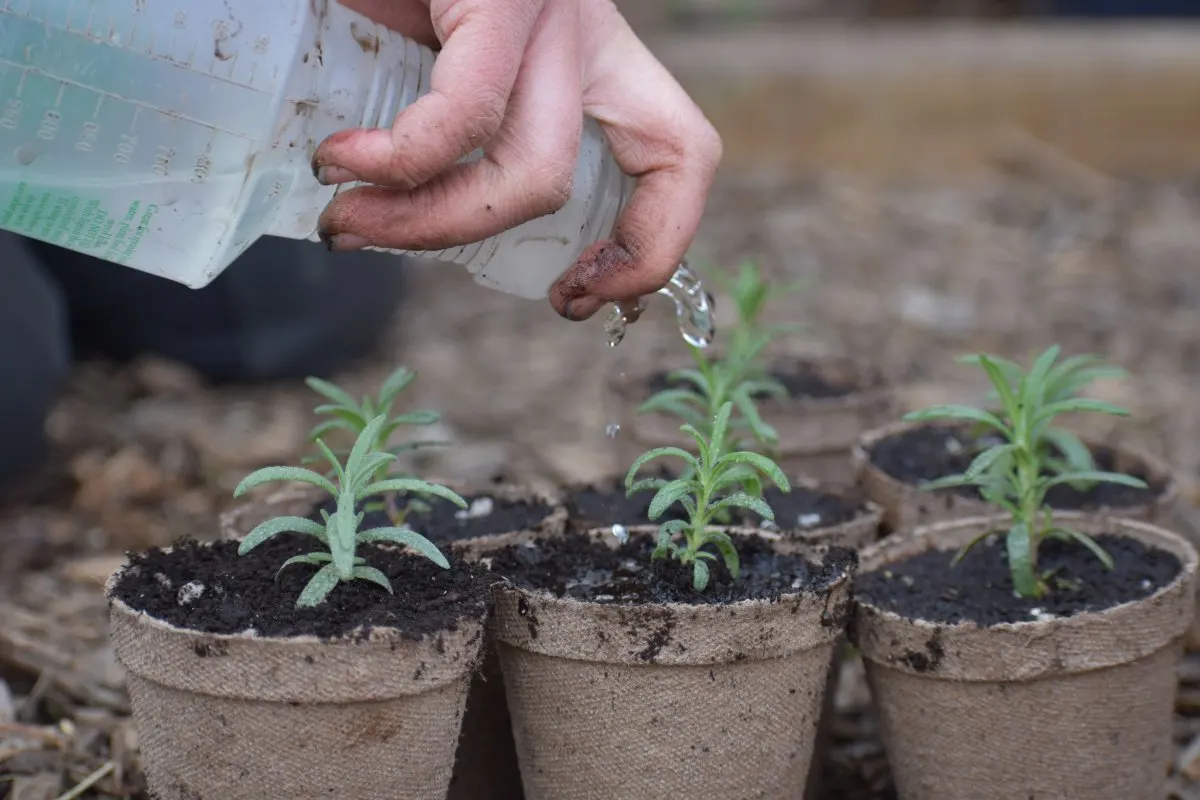
26. Thyme (Thymus vulgaris)
Research into plants as natural herbicides found that this Mediterranean herb was even more allelopathic than rosemary. containing the monoterpene carvacrol.
Grains
27. Barley (Hordeum vulgare)
Farmers have planted barley as a weed-killing cover crop for many years.
28. Buckwheat (Fagopyrum esculentum)
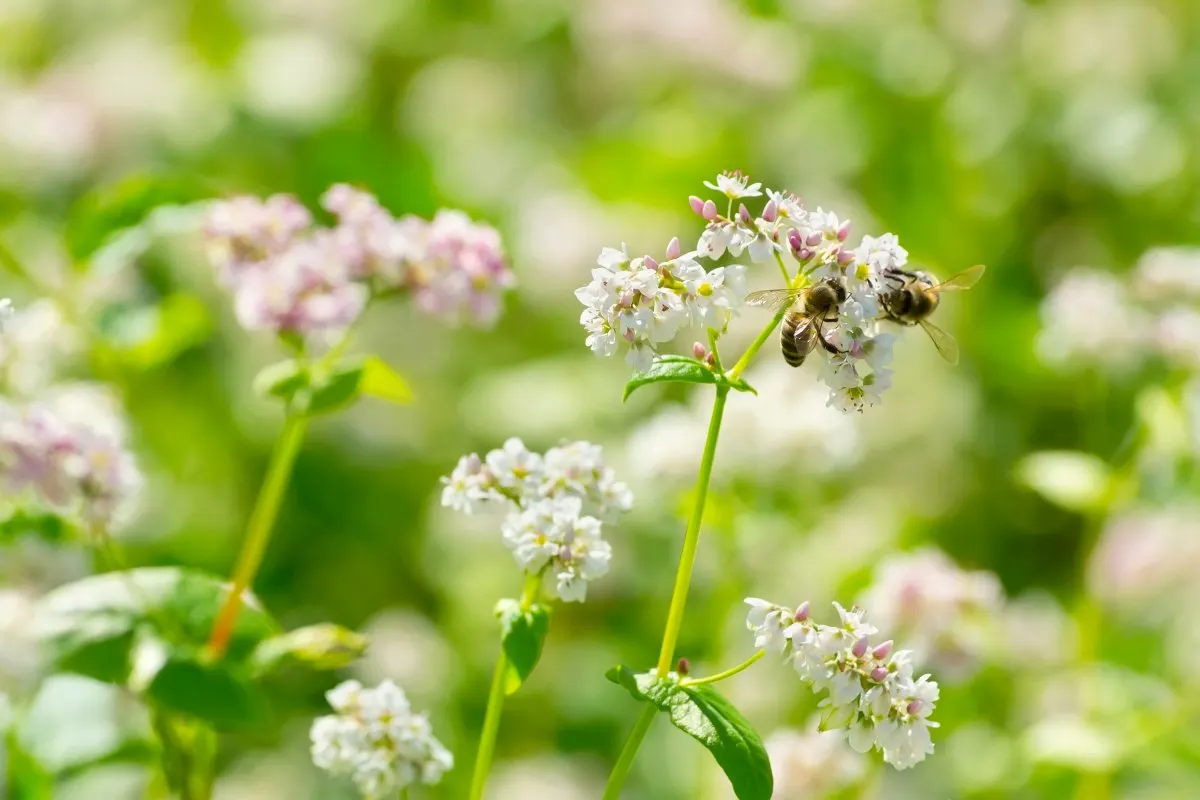
Many gardeners plant small plots of buckwheat as bee forage. It also makes an excellent food for livestock. This grain is frequently used as a cover crop by homesteaders to reduce weeds in crop fields thanks to its allelopathic qualities.
Ornamentals
30. Bracken Fern (Pteridium arachnoideum)
While quite attractive in a shady garden, the bracken fern combines aggressive growth with phytotoxicity that can damage other plants and reduce biodiversity.
Alleviating the Effects of Allelopathic Plants
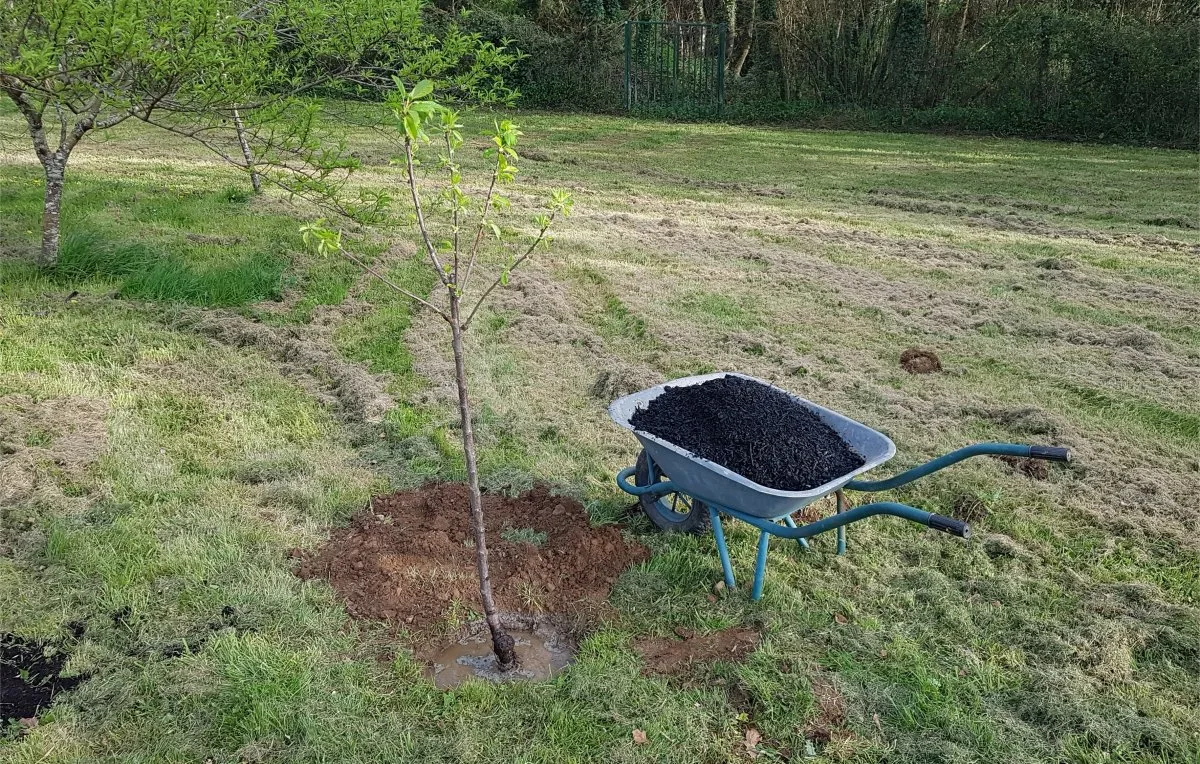
What can you do to mitigate the effects of allelopathic plants if you’ve already planted them?
Researchers found that improving the diversity of soil biology can reduce the damage. One effective method is adding biochar — charcoal made from organic materials — which captures and degrades allelochemicals in the soil.
It’s amusing to think that even plants have toxic coworkers, but knowing we have some control over how much damage they can do is a big relief.

Get the famous Rural Sprout newsletter delivered to your inbox.
Including Sunday musings from our editor, Tracey, as well as “What’s Up Wednesday” our roundup of what’s in season and new article updates and alerts.

